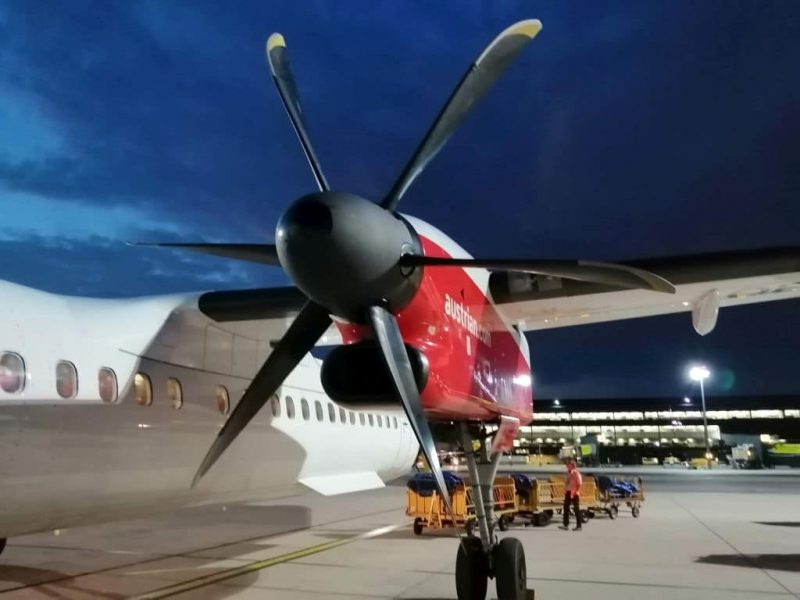In general, turboprop aircraft, sometimes also called "propeller aircraft" colloquially, are considered to be more fuel-efficient than comparable machines with jet engines. However, many passengers consider them – completely wrongly – to be “outdated”. But how does a turboprop engine actually work?
A turboprop engine is an air-breathing internal combustion engine designed specifically for use in propeller-driven aircraft. It consists of a turbine that drives a shaft, which in turn drives a propeller through a gearbox.
The engine draws air through an inlet placed in front of the turbine. The air is then directed into the turbine where it is compressed and passed through a combustor where fuel is injected and burned. The hot exhaust gases from the combustion then drive the turbine, which in turn drives the shaft that drives the propeller.
An important difference between a turboprop and a conventional turbojet engine is that most of the energy in the hot gas in the turboprop is not used for thrust, but remains in the turbine to drive the shaft. The propeller then converts the remaining thrust into propulsion. This makes turboprop engines much more efficient at lower airspeeds compared to turbojets, allowing them longer range and longer flight duration.
Turboprop aircraft generally use less fuel than jets because they can fly at lower speeds and at lower altitudes. Savings can vary depending on aircraft type, flight conditions and distance, but some estimates show that turboprop aircraft use up to 30-40% less fuel than comparable jets. That means turboprops can have better range and efficiency on short- to medium-haul flights, especially when it comes to smaller airports and runways that are inaccessible to larger jets.
Turboprop engines are often used in smaller aircraft such as regional passenger jets, business jets and military transport aircraft. One of the fastest turboprop aircraft in the world is the Beechcraft T-6 Texan II, used by the US Air Force and US Navy as a training aircraft. The T-6 Texan II has a maximum cruise speed of approximately 610 km/h (380 mph) and can reach a top speed of 650 km/h (400 mph).
The Saab 2000's maximum cruising speed is approximately 665 km/h (413 mph) and it can fly at altitudes of up to 10.668 meters (35.000 feet). However, the average cruising speed of the Saab 2000 is typically around 640 km/h (400 mph). The actual speed depends on many factors such as weather conditions, flight route, flight altitude and flight load.
There are also other fast turboprop aircraft such as the Piaggio P.180 Avanti, the Pilatus PC-12 and the Ursprung TBM-900, all of which are capable of speeds of around 600 km/h (370 mph). There are several machines currently available as new construction. Some of the best known are:
ATR 42/72: Manufactured by Airbus and Leonardo, the ATR family is one of the most popular turboprop series used for regional flights.
Beechcraft King Air: Manufactured by Textron Aviation, the King Air is one of the most well-known and widely used turboprop aircraft series in the world.
Pilatus PC-12: Manufactured by Pilatus Aircraft, the PC-12 is a highly versatile turboprop aircraft used for passenger and cargo flights.
Hence TBM: Manufactured by Therefore, the TBM is a popular choice for business travelers as it flies quickly and efficiently.
Viking Series 400: Manufactured by Viking Air, the Series 400 is a modernized version of the legendary DHC-6 Twin Otter.
There are also other turboprop aircraft manufacturers such as Mahindra Aerospace which produces the Airvan 10 and Quest Aircraft which produces the Kodiak.





 trail (for them it's free to use)
trail (for them it's free to use)